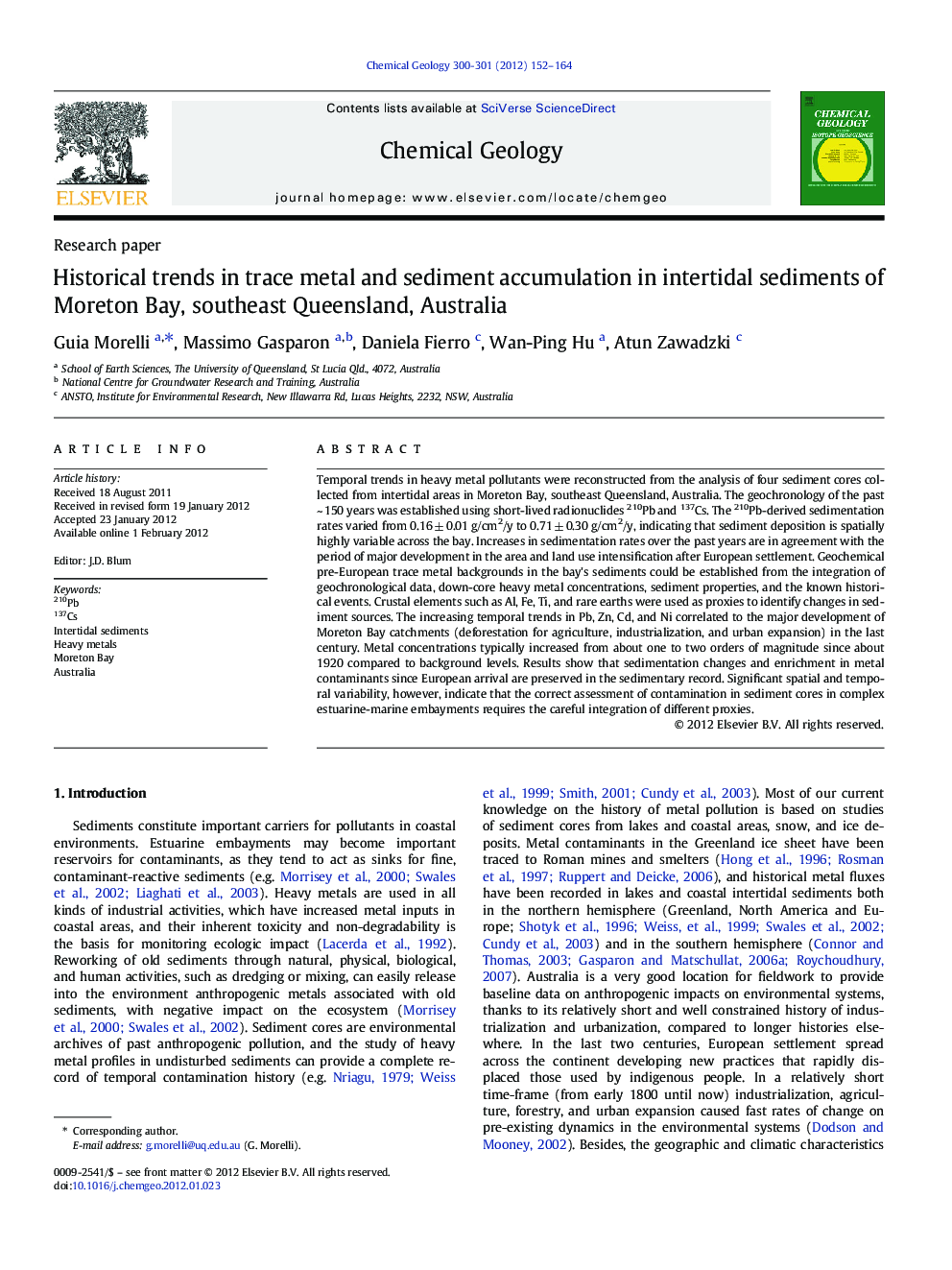| Article ID | Journal | Published Year | Pages | File Type |
|---|---|---|---|---|
| 4699489 | Chemical Geology | 2012 | 13 Pages |
Temporal trends in heavy metal pollutants were reconstructed from the analysis of four sediment cores collected from intertidal areas in Moreton Bay, southeast Queensland, Australia. The geochronology of the past ~ 150 years was established using short-lived radionuclides 210Pb and 137Cs. The 210Pb-derived sedimentation rates varied from 0.16 ± 0.01 g/cm2/y to 0.71 ± 0.30 g/cm2/y, indicating that sediment deposition is spatially highly variable across the bay. Increases in sedimentation rates over the past years are in agreement with the period of major development in the area and land use intensification after European settlement. Geochemical pre-European trace metal backgrounds in the bay's sediments could be established from the integration of geochronological data, down-core heavy metal concentrations, sediment properties, and the known historical events. Crustal elements such as Al, Fe, Ti, and rare earths were used as proxies to identify changes in sediment sources. The increasing temporal trends in Pb, Zn, Cd, and Ni correlated to the major development of Moreton Bay catchments (deforestation for agriculture, industrialization, and urban expansion) in the last century. Metal concentrations typically increased from about one to two orders of magnitude since about 1920 compared to background levels. Results show that sedimentation changes and enrichment in metal contaminants since European arrival are preserved in the sedimentary record. Significant spatial and temporal variability, however, indicate that the correct assessment of contamination in sediment cores in complex estuarine-marine embayments requires the careful integration of different proxies.
► Intertidal sediment cores are successfully dated using 210Pb and 137Cs. ► Sedimentation rates increase after post European land use modifications. ► Heavy metals increase at least 2 × background levels. ► Historical contamination in sediments is determined integrating different proxies.
